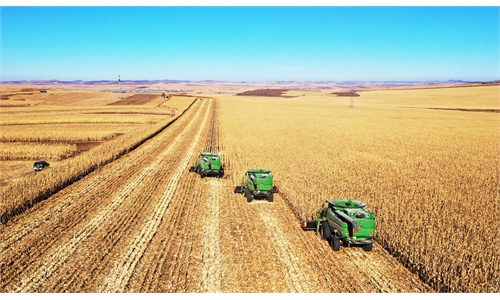ARTS / CULTURE & LEISURE
Giant goose reared in small Chinese town rivals French foie gras
Dining feast in Chaoshan
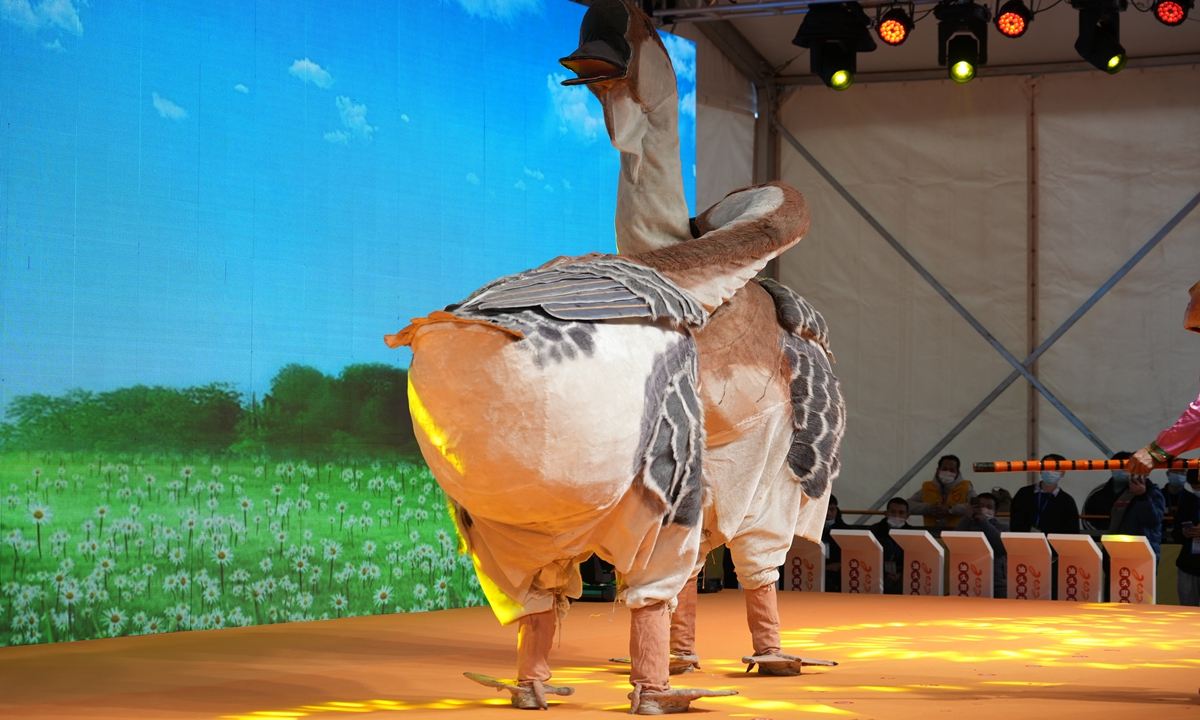
Two performers act as giant geese at the opening ceremony of the 2022 Lion-head Goose Cultural Festival on February 22, 2022.Photo: Deng Zijun/GT
When it comes to goose-related dishes, French foie gras is probably the first thing that comes to mind. However, in the eyes of the Chaoshan people in South China's Guangdong Province, a kind of local goose liver is even better than French foie gras. That is the liver of the lion-head goose bred in Chenghai, a district in Shantou City of the Chaoshan region, which consists of Chaozhou, Shantou, and Jieyang.
Hailed as the "king of the geese", the lion-head (shitou) goose is the biggest reared goose breed in China and one of three giant goose species in the world. It gets the name for its huge lion-like sarcoma on the head. The "Chenghai Lion-head Goose" is a national-level protected breed of livestock and enjoys a high reputation within and outside China.
An adult goose can weigh up to 20 to 30 catties (10 to 15 kilograms), double or even triple that of a common goose. The winner of the lion-head goose king competition held in Chenghai in 2021 weighed in at 39.1 catties (19.55 kilograms). It's no wonder that these geese are considered even better house guards than dogs in this area. Local people told GT that almost every Chaoshan person has the trauma of being devastatingly chased by this huge creature in their childhood. However this can't stop their love of goose cuisine when they grow up.
No goose, no feast
In Chaoshan, there's a folk saying that goes "no goose, no feast", which means, a proper feast must have goose-related dishes.
The most popular cooking method is to marinate the goose, usually males above the age of three. Rinse the goose thoroughly and pat it dry, then rub it with refined salt and cure for half an hour. While waiting, the marinade, which is the secret to a delicious brine goose, can be prepared. It's usually boiled with pork bones, scallops, southern ginger, star anise, cinnamon, licorice, cloves, and other spices, along with soy sauce, fish sauce and wine.
There is no uniform standard, the composition and proportion of spices and sauces are not only the trade secret of various brine goose shops, but also the key to differentiate the taste from other shops.
The lion-head goose is soaked in the marinade for several hours, adjusted according to the size and tenderness of the goose. When the skin glitters amber and the room is filled with an irresistible aroma, the goose is ready to be served. It's cut into pieces and served with coriander and dipped in a white vinegar garlic sauce.
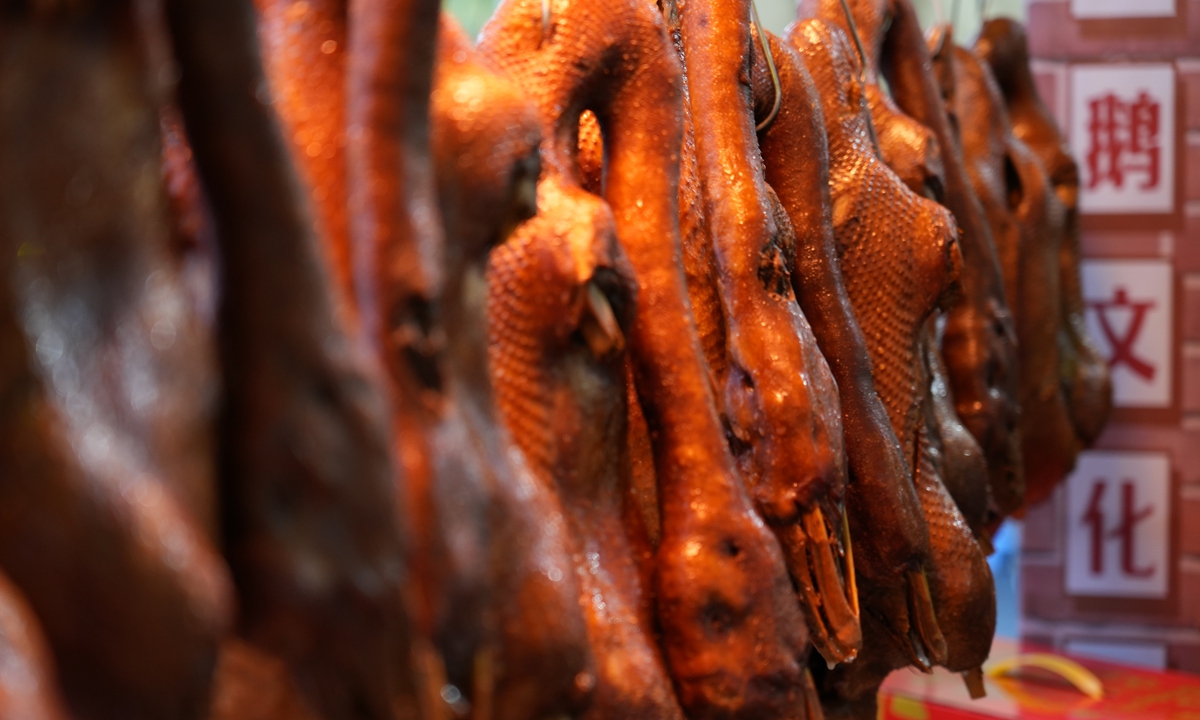
A display of different goose cuisine at the exhibition.Photo: Deng Zijun/GT
Serve the distinguished with the best
From meat to offal, every part of goose is used in the best way possible, including the head. In fact, the head is unexpectedly the most expensive part, contrary to other fowl like chicken or duck of which the head is usually a cheap cut. For epicures, the goose head is the most delicious part and a perfect companion to a glass of Chinese baijiu.
A head (usually includes the neck) of a lion-head goose is less than 2 catties (1 kilograms), but the price can easily reach 1,000 yuan ($158). In November 2020, five brine goose heads were auctioned off for 66,500 yuan ($10,514) at an online festival in Chenghai, with the most expensive one reaching 14,800 yuan ($2,340). So if you are hosten by a Chaoshan family, don't feel slighted when a goose head is served.
Goose liver comes right after the head in terms of popularity. Unlike the fattened foie gras, the goose liver in Chaoshan is of normal size and form. It's very delicate and textured, and just melts in the mouth; fat but not greasy, not as firm as French foie gras. Coupled with the specially made satay sauce, the aftertaste of the goose liver lingers on the tongue.
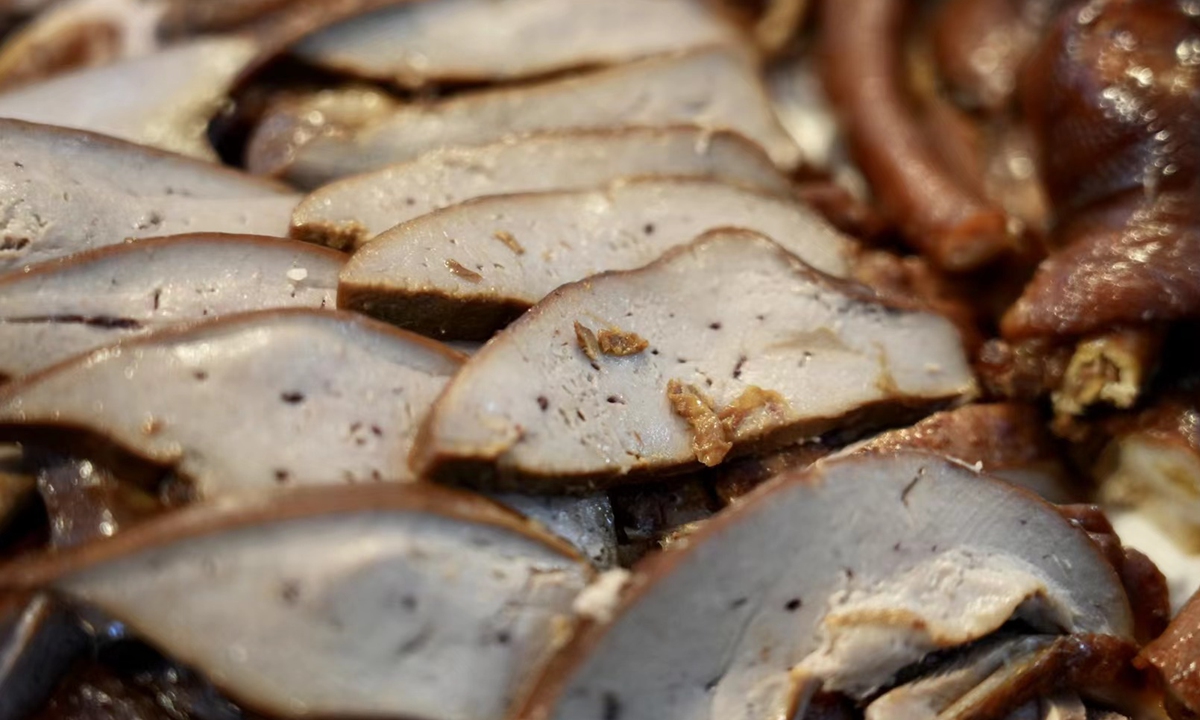
A display of different goose cuisine at the exhibition.Photo: Deng Zijun/GT
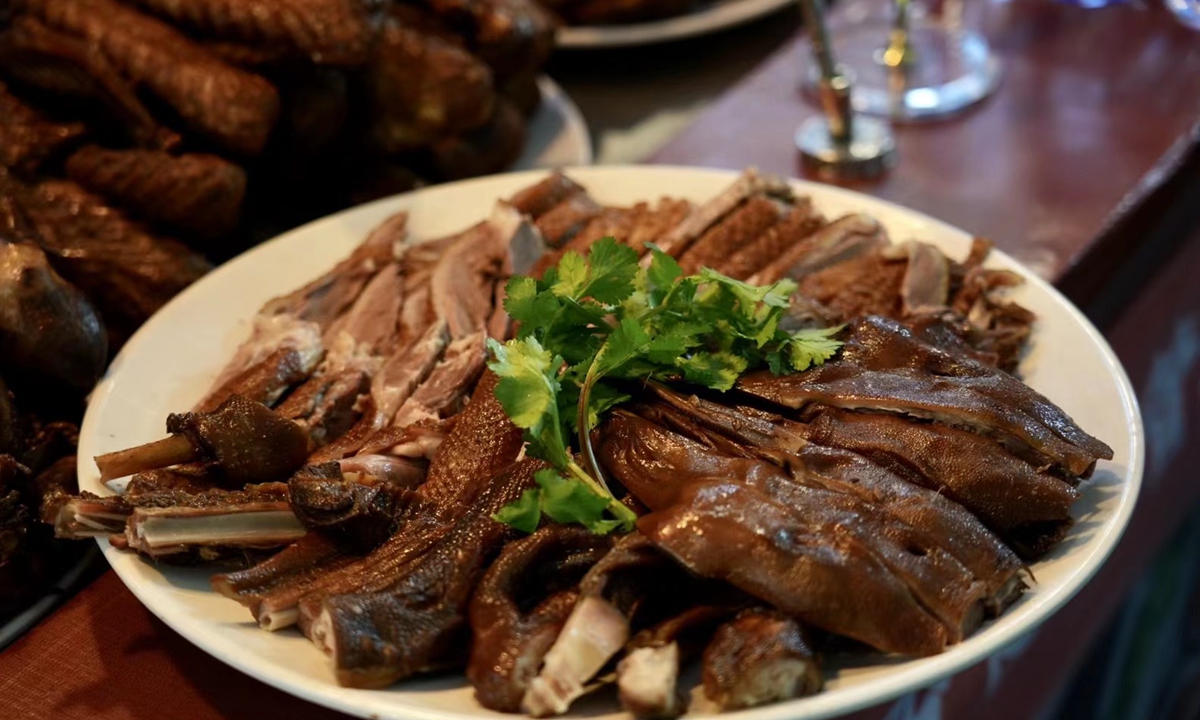
A display of different goose cuisine at the exhibition.Photo: Deng Zijun/GT
Hometown taste
As a famous place to numerous overseas Chinese, Shantou is trying every means to make it convenient for them to taste home food without much travel. Local enterprises actively develop pre-cooked products of brine lion-head goose. A goose marinated in a shop in Chenghai could easily appear on the dinner table of a Chaoshan family on the other side of the planet in just a few days. What's more, the flavor and nutritional value of the goose is well reserved.
Since the first export was achieved in December 2021, seven batches with a total weight of 9,400 kilograms of Chenghai lion-head geese have been successfully exported to several countries and regions in Southeast Asia.
As the Regional Comprehensive Economic Partnership Agreement (RCEP) formally came into effect this year, the Chenghai goose industry actively integrated into RCEP and grasped new opportunities in the international market.
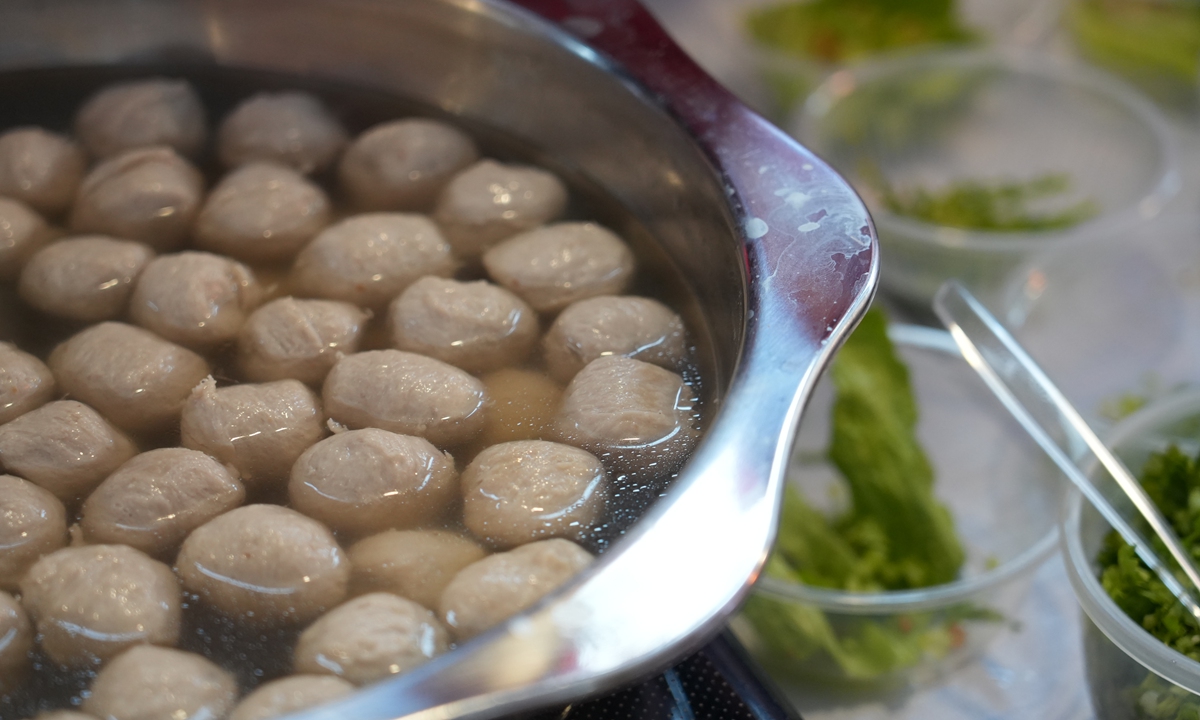
A display of different goose cuisine at the exhibition.Photo: Deng Zijun/GT
More to explore
Besides the lion-head goose, there are more delicacies to explore in the Chaoshan region: Chaoshan beef meatball, perhaps the bounciest meatball in the world; Chaoshan beef hotpot, taking the word "fresh" to the extreme; seafood porridge, marinated crab and shrimp, and so on. The list is endless.
It's not hard to understand why people say you can never leave Chaoshan without gaining two or three kilos of weight. But it's definitely worth it!


